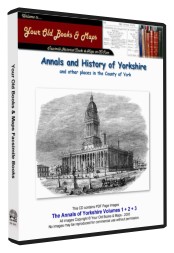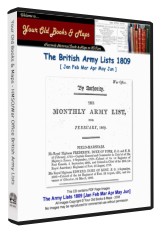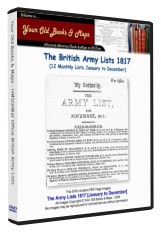The Annals of Yorkshire Volumes 1 2 & 3 John Mayhall 1874
THE ANNALS OF YORKSHIRE
Containing in chronological order all the most interesting events that have occurred in, or relate to this important part of the kingdom; from the earliest period to the present time; collected from the works of numerous authors, newspapers, &c., &c.
PREFACE
The "ANNALS" contain in chronological order, the principal events that have occurred in Yorkshire, from the date of the most remote authentic histories, down to the present time. The events have been selected and condensed from every source of information within the reach of the compiler, and through the kindness of friends, several curious and interesting particulars are now published for the first time. Great care has been taken to avoid giving a party or political bias to the work, so that it will be found interesting to all classes of readers. Where so many subjects are treated upon, notwithstanding that the utmost attention has been paid to accuracy, mistakes will doubtless have been made; but the compiler hopes for the reader's indulgence, and would state in palliation of faults, both of omission and commission, that besides the perusal of many works connected with the subjects introduced, he has had to wade through thirty-six years of local newspapers, and that after the toil of the day, and in hours stolen from recreation, etc. The work is embellished with numerous engravings. The view of Leeds has been engraved from Thoresby's Ducatus Leodiensis, published in the year 1715. The beautiful view of Kirkstall Abbey, taken in 1769, has been copied from a scarce and valuable engraving in the possession of James Hargrave, Esq., of Burley, near Leeds, kindly lent by him for that purpose. The other views consist of York Minster, the Leeds old Moot Hall, the Parish Church before it was rebuilt, the Leeds Town Hall, the Crimean Monument erected in the Leeds Parish Church, views of Skipton, Huddersfield, and Saltaire, the Parish Church, Orphanage at Skircoat Moor, and Town Hall, Halifax ; the New Exchange and Parish Church at Bradford ; New Infirmary, Leeds ; Sheffield Parish Church, and Adel Church, near Leeds. With these explanations the work is committed to the public, in the hope that it will receive that favour of which the compiler and the publisher have endeavored to make it worthy.
SNIPPETS
212.
York became the scene of the most inhuman cruelties, committed by Caracalla, who perceiving that Geta had a powerful party in the army, ordered 20,000 soldiers to be put to death, under a pretence of mutiny; and murdered his brother Geta with his own hands, in the arms of his mother.
1261.
1261.
Up to this period, Mirfield formed a part of the Saxon parish of Dewsbury, and the cause of its separation, as appears from a latin M.S., in Hopkinson's collection of documents, is curious :—
"As the Lady of Sir John Heton, the baroness of Mirfield, was going to mass before dawn on Christmas-day, to the parish church of Dewsbury, a distance of three miles, she was waylaid and robbed, and her principal attendant murdered, at a place called Ravensbrook- layne. On the same day, while she was at dinner, at nine o'clock in the morning, that being then the fashionable time, two mendicant ecclesiastics came to crave her charity, telling her at the same time that they were going to Rome, where her husband, Sir John, was then residing. On this intimation she sat down and wrote a letter to her husband, narrating to him the horrid scene she had so recently witnessed, and requested him to make interest with the pope to erect the chapel of Mirfield into a parochial church. The letter she confided to the priests who duly delivered it to the knight, whose suit was so successful, that his holiness elevated Mirfield into a rectory."
1643.
"As the Lady of Sir John Heton, the baroness of Mirfield, was going to mass before dawn on Christmas-day, to the parish church of Dewsbury, a distance of three miles, she was waylaid and robbed, and her principal attendant murdered, at a place called Ravensbrook- layne. On the same day, while she was at dinner, at nine o'clock in the morning, that being then the fashionable time, two mendicant ecclesiastics came to crave her charity, telling her at the same time that they were going to Rome, where her husband, Sir John, was then residing. On this intimation she sat down and wrote a letter to her husband, narrating to him the horrid scene she had so recently witnessed, and requested him to make interest with the pope to erect the chapel of Mirfield into a parochial church. The letter she confided to the priests who duly delivered it to the knight, whose suit was so successful, that his holiness elevated Mirfield into a rectory."
1643.
Savile fled and escaped being taken by crossing the river; but Sergeant-major Beaumont was drowned in making the attempt. The following memorandum occurs in the register of burials at the Leeds Parish Church :—
"23rd January, 1643. This was the day when Leeds was taken by Sir Thomas Fairfax. Eleven soldiers slayne, buried 24th January—ten unpaid for; five more slayne two or three days after; six more died of their wounds." The same register contains the following:— "Buried 1st April, 1643. Captain Boswell slain at Seacroft battle, and six soldiers. A gentleman and two common soldiers slain in Robert Williamson's house, of Hunslet: buried 13th April, 1643. Five soldiers more slain—nine more in May; sixteen more in June; twelve more in July. 26 soldiers buried July and August, 1644."
After the storming of Leeds, the royalists assumed a position at Seacroft, where they were assailed by the parliamentarians about the end of March, but they maintained their post, and the assailants were defeated with the slaughter of a few of their men.
The town of Leeds in these turbulent times often changed masters ; but was never the scene of much bloodshed.
1850 July 24th.
1850 July 24th.
Mr. Joseph Horner, sen., of Wakefield, having incidently mentioned to a friend a report stated to be current in the town prejudicial to Miss Fernandez, that young lady, backed by her relatives, commenced proceedings against him in the Ecclesiastical Court. The court ordered Mr, Horner to do penance in the church at Wakefield, as a punishment. The extraordinary ceremony took place on Sunday, the 24th of August, when Mr. Horner, in the presence of the vicar and others, read an apology for the statements he had made.
The event created great excitement in Wakefield
1866 Feb 29th.
1866 Feb 29th.
About 11 a.m. a fire broke out in the large mill belonging to Messrs Stubley, situated near the Batley Railway Station. The damage was estimated at from £14,000 to £15,000. Under an award, the Corporation of Halifax had to pay Mr John Crossley £1300 for the land required to make Bull Close Lane 40 feet wide, opposite Saville Mills.
1867 10th December.
1867 10th December.
A very extraordinary trial for murder occupied the Court for the West Riding Gaol Delivery, held at Leeds. Richard Harrison, a labourer, was charged with having murdered Robert Abbotson, an old man, at Gargrave, on the 5th November. The practice of discharging pistols and fireworks on that day was being carried on, and a policeman, named Duckett, attempted to prevent it. He had taken a pistol from a man named Mason, and some fireworks from children living in a house where Abbotson, the deceased, also resided. He entered this house, and while being in a room with Abbotson, the report of a pistol was heard, and the old man received a shot in the leg, causing him injuries of which he afterwards died. It was urged for the prosecution that the shot was intended for the policeman, that the prisoner had been heard to utter threats against him, and that he had been discharging a pistol on the night in question. On the other hand, it was shown that the prisoner was in the habit of talking rashly, that the bullet with which the deceased was struck was a rifled one, while Harrison's pistol had a smooth bore, and that the shot could not have struck the man where it did by being fired into the room from without through a half-opened door. Besides these circumstances, others were stated raising serious doubts whether the prisoner was the man who fired the fatal shot, and ultimately a verdict of not guilty was found. 11th. A charge of manslaughter was heard against William Burton, a blacksmith, who killed a fellow-workman, named Moverley, at Doncaster, on the 27th November. The prisoner had been much provoked by the deceased, and in his passion struck him on the head with a hammer. He pleaded guilty, and, in consideration of the extenuating circumstances of the case, the learned judge sentenced him only to a month's imprisonment, with hard labour.










